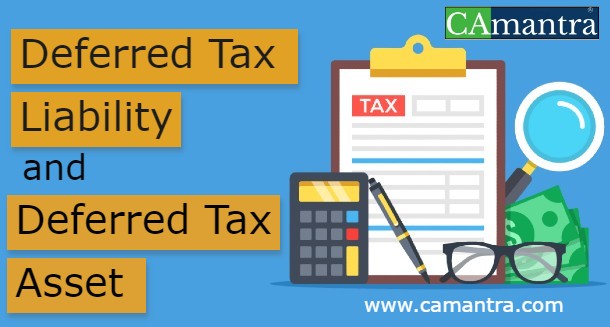Deferred Tax Liability (DTL) and Deferred Tax Asset (DTA) forms an essential part of Financial Statements. This adjustment made at end of year closing of Books of Accounts affects the Income-tax outgo of the Business for that year as well as the years ahead.
What Is a Deferred Tax Asset?
Items on a balance sheet of company that may be used to reduce taxable income in the future are called deferred tax assets. The situation can take place when a business overpaid taxes or paid taxes in advance on their balance sheet. In last, these taxes are returned to the business in the form of tax relief. Thus, overpayment is considered an asset to the company. A DTA is the opposite of a deferred tax liability, which can enhance the amount of income tax owed by a company.
These conditions that cause origin of deferred tax asset are as follows:
- The taxing authority takes the expenditures into account much before time.
- A tax on the revenue gained is levied before time.
- There is a distinctness in tax rules for asset and liabilities.
What Is a Deferred Tax Liability?
A deferred tax liability is a tax that is assessed for the current period but has not yet been paid – that means that it will eventually come due. The deferral comes from the timing distinction between when the tax is accrued and when the tax is paid. A DTL records the fact the company will, pay more income tax because of a transaction in the future that took place during the current period, like an instalment sale receivable.
These conditions that cause origin of deferred tax liability are as follows:
- In order to showcase huge profits to the shareholders, the companies often push their profits.
- For dual accounting that means when companies keep more than one copies of the financial statement, for their personal use or for furnishing the same to tax authorities.
- Sometimes companies also flick the current profits into future, this gives them the opportunity to decrement of the tax amount. By doing this instead of paying the saved money as taxes, they use that extra amount of money for making investments.
Effect of Tax Holiday with respect to DTA/ DTL
A tax holiday is termed as an incentive scheme that is given to companies by the government. It provides kind of tax reduction or in some cases elimination. Sometimes it is used for the reduction of taxes, it is a strategy used for new enterprises that are getting established in the free trade zone. With the motto of encouraging production and consumption of some goods and items, the government discards certain taxes for a provisional period, depending on different conditions.
It should be kept in mind that the deferred tax from the timing difference that cause a reversal during the tax holiday duration should not be regarded during the enterprise’s tax holiday period. Deferred tax that is related with the time differences that causes a reversal after the tax holiday should be calculated in the year that it originated.
Effect on MAT with respect to DTA/ DTL
MAT also stands for Minimum Alternate Tax which is to be paid by a company if the payable tax is as per the normal provision of the income tax that is smaller than the tax calculated @18.5% of the profit in book.
An increase in the book profit is because of:
- Paid income tax or a tax provision
- An amount that is moved to any reserve
- Arrangements made for unpredictable liabilities
- Provision made for Deferred Tax etc.
Now, let us see that what the causes of its decrease are:
- An amount drawn out from a reserve or a provision
- Depreciation, leaving aside revaluation depreciation, that is debited to P&L
- Lesser of loss brought forward or any unabsorbed depreciation
- The deferred taxes which are credited to P&L etc.
There are few debates about the debit of deferred tax liability to P&L, that whether it should be included in the book income during the calculation of Minimum Alternate Tax (MAT).

